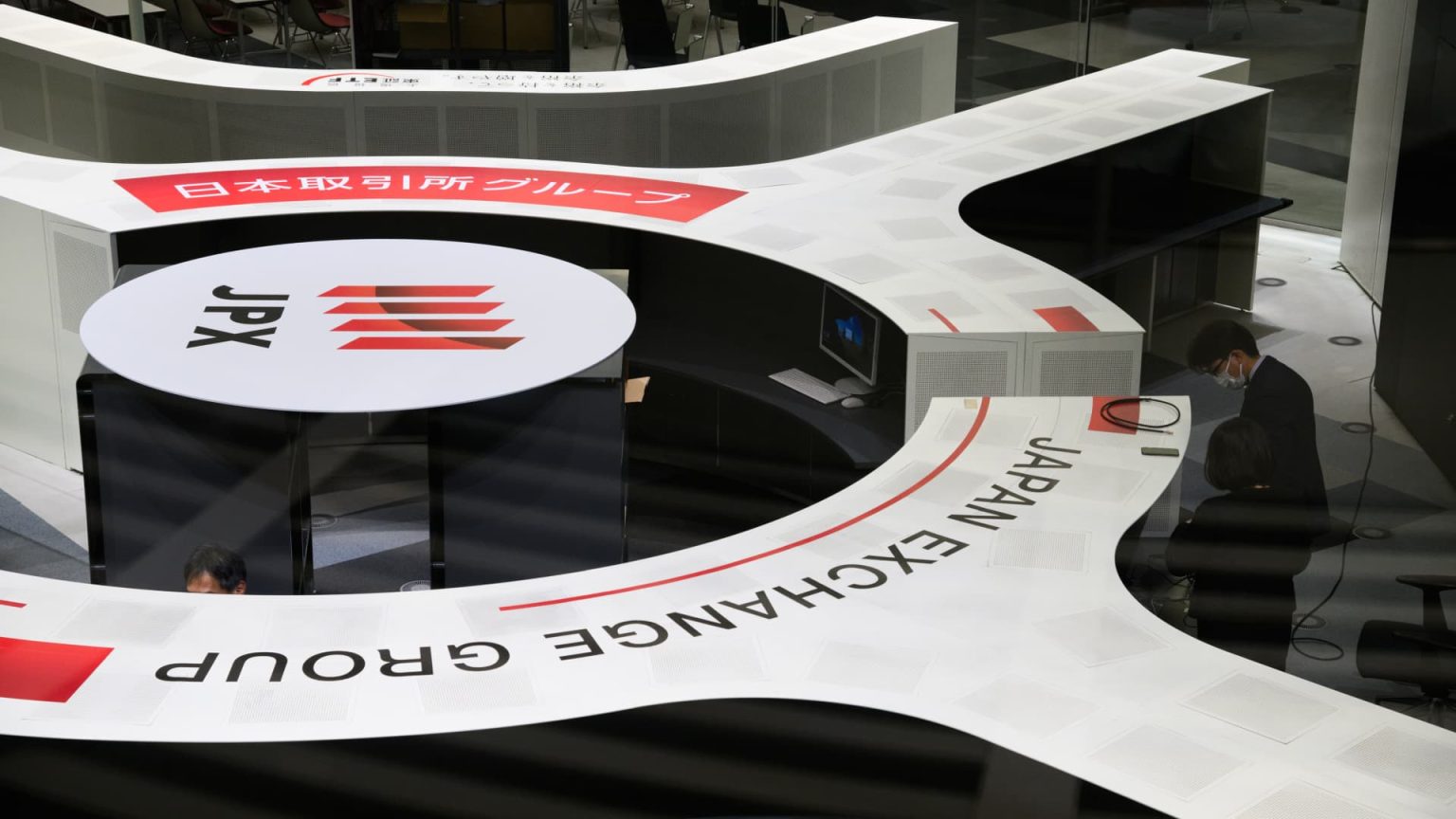Asia-Pacific markets experienced a significant decline on Wednesday, with Japan’s Nikkei 225 leading the losses after a sell-off in U.S. tech stocks and weak U.S. economic data raised fears of a recession. The Nikkei 225 was down 3.41%, while the broader Topix index fell by 2.74%. Semiconductor-related stocks, such as Tokyo Electron, Renesas Electronics, and Advantest, saw large drops, with losses ranging from 6.86% to over 9%. South Korea’s Kospi and the small-cap Kosdaq also experienced losses, with heavyweights Samsung Electronics and SK Hynix, both suppliers to Nvidia, falling by 2.76% and 6.95% respectively. In Australia, the S&P/ASX 200 lost 1.46%, while Hong Kong’s Hang Seng index futures were lower than the previous close.
In the U.S., chipmaker Nvidia led the sell-off, dropping over 9% in regular trading and dragging other semiconductor stocks like Intel, AMD, and Marvell down with it. The VanEck Semiconductor ETF, which tracks semiconductor stocks, experienced its worst day since March 2020, falling by 7.5%. Additionally, the ISM manufacturing index for August came in at 47.2%, slightly higher than July but below the expected 47.9%. This index measures the percentage of companies reporting expansion, with anything below 50% indicating contraction. The Dow Jones Industrial Average, S&P 500, and Nasdaq Composite all recorded their worst days since the global sell-off on August 5th.
Overall, the market downturn in Asia-Pacific was driven by concerns over the tech sector and weak economic data in the U.S., leading to broad-based losses in major indices such as the Nikkei 225, Topix, Kospi, Kosdaq, S&P/ASX 200, and Hang Seng. Semiconductor stocks were particularly hard hit, with major players like Nvidia and its suppliers experiencing significant declines. The sell-off was further exacerbated by the release of disappointing manufacturing data, signaling a potential contraction in the sector. The negative sentiment in the markets was reflected in the performance of major U.S. indexes, which saw their worst day since the August sell-off, with significant losses in the Dow Jones, S&P 500, and Nasdaq Composite.
Going forward, investors will be closely monitoring developments in the tech sector and economic data releases for signs of recovery or further weakness. The performance of semiconductor stocks, in particular, will be a key indicator of market sentiment, as they are often seen as bellwethers for the broader technology industry. Any improvements in economic indicators, such as the ISM manufacturing index, could help alleviate recession fears and support a rebound in market sentiment. However, ongoing uncertainties surrounding trade tensions, geopolitical issues, and the global economic outlook may continue to weigh on investor confidence and drive further volatility in the markets.


